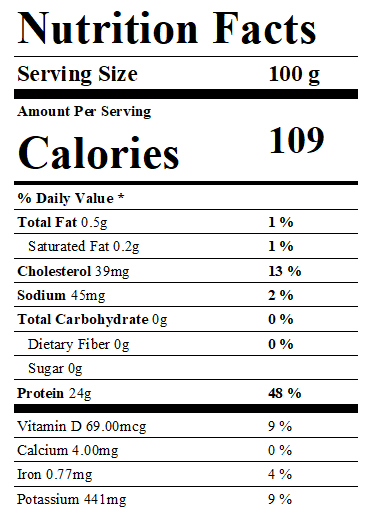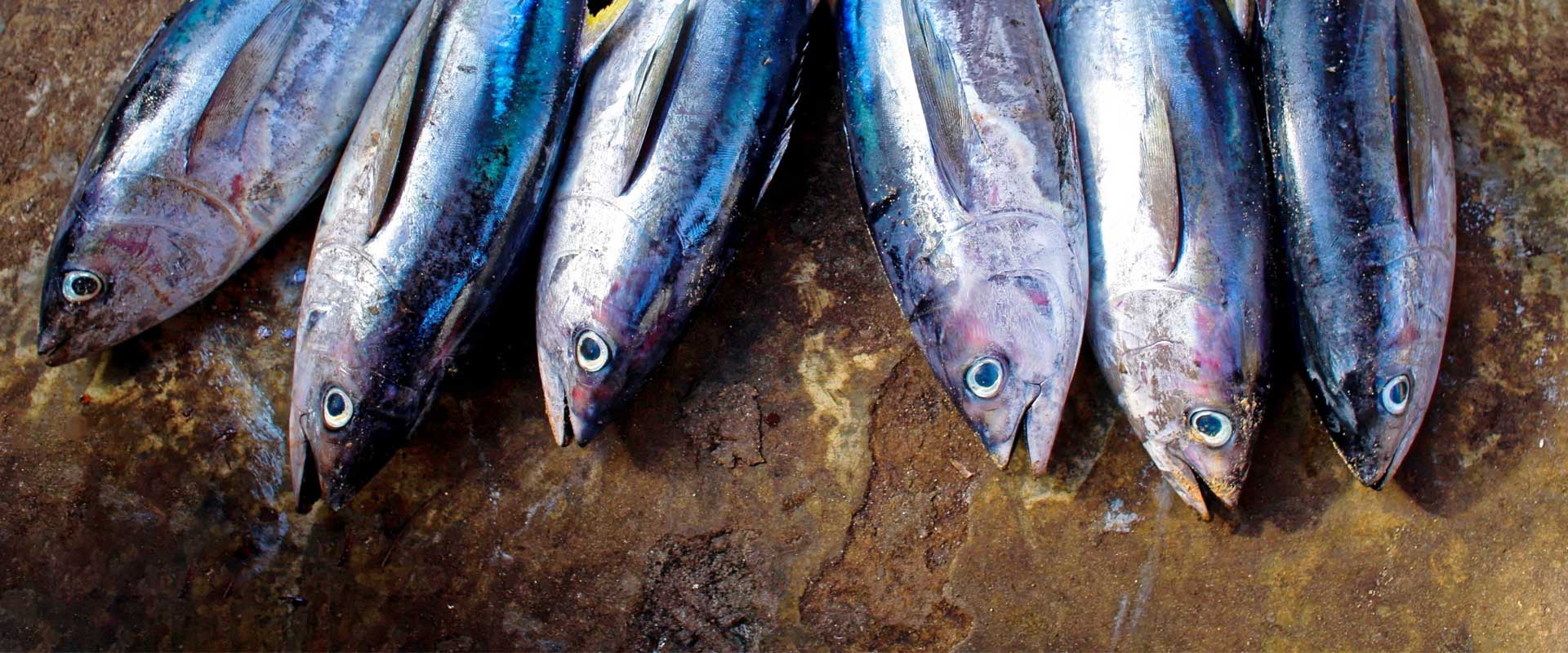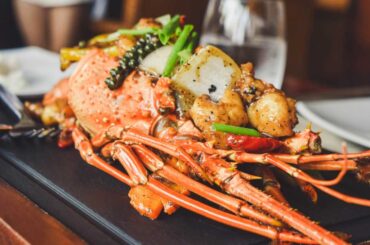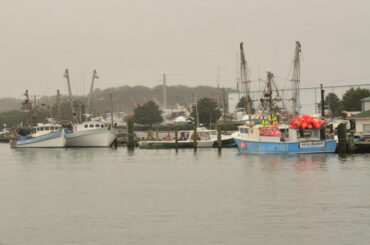Table of Contents
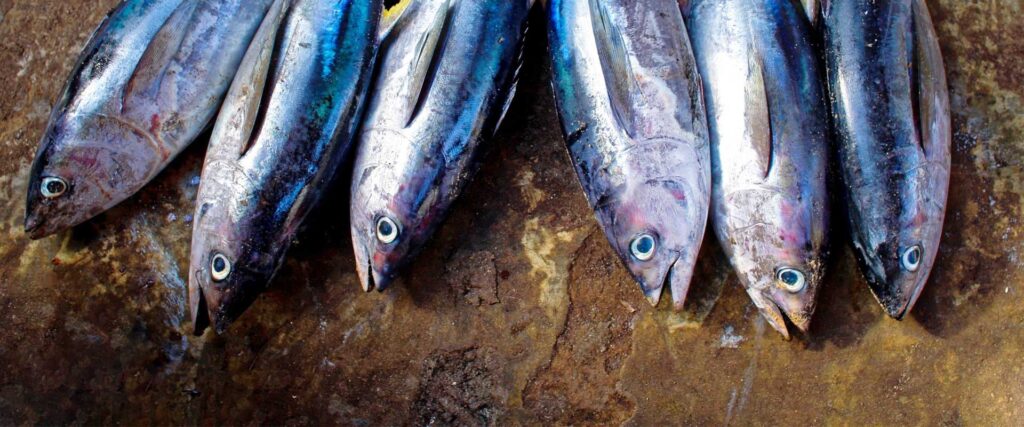
- Species Name – Thunnus Albacares
- Species Family – Scombridae
- Species Order – Perciformes
- Habitat- Offshore
Yellowfin Tuna is one of the most popular fish in Sri Lanka and yellowfin tuna is among the larger tuna species in the Indian Ocean. Yellowfin tunas are found worldwide in tropical and subtropical waters. There is a good demand for locally produced Yellowfin Tuna (Kelavalla) exports and domestically. Exports are mainly to Europe and Japan. Depending on the size of the calf, it can range from 25kg to 90kg but these fish can grow up to 150kg. These fish are mainly caught for the multi-day boats.
These fishes are called the Yellow Tuna(Kelavalla) because they have a yellowfin on the upper side
Yellowfins Tuna grow rapidly from 5 to 7 years of age, and they begin to reproduce at 2 years of age. Females can lay eggs almost daily and lay millions of eggs at any one time. Females always lay their eggs near the surface of the sea where they were fertilized. Young Yellowfins Tuna live close to the surface and as they mature, they swim in schools in deep water. Flotsam gathers around natural floating debris, floating ticks, whales, and other large marine mammals. They are at the forefront of the food chain and eat other fish and squid.
Yellowfin Tuna has a blue back and colorful yellow and silver belly. Their upper and lower fins are bright yellow, and they have a body adapted to swim fast. Yellowfin has soft, mushy, and bright red flesh. Yellowfin is often eaten raw, such as sashimi and sushi. It is considered one of the highest quality foods in Japan and is often canned, Fresh and frozen, and sometimes smoked. The main canaries used for yellowfin tuna are found in Thailand, the Philippines, Indonesia, Mexico, Spa Spain, and Italy. The main markets for yellowfin tuna are the United States, Japan, and Europe.
Local Names
yellowfin tuna scientific name- Thunnus albacares
AUSTRALIA: Yellowfinned albacore.
BRAZIL: Albacora de lage .
CUBA : Atun de aleta amarilla .
FRANCE : Thon a nageoires jaunes .
GERMANY : Gelbflossenthun .
INDIA: Gowalla,
Sri Lanka: Kelawalla (Sinhalese).
ITALY: Tonne albacore.
JAPAN : Hatsu, Kihada , Kimeji (young), Kiwada .
MARTINIQUE : Z’aile jaune .
NETHERLANDS : Geelvintonijn .
PACIFIC ISLANDS TRUST TERRITORIES : Palau: Takuu .
PHILIPPINES : Albaeora , Badla-an , Buys, Tambakol .
POLAND: Albacore.
PORTUGAL : Atum albacora , Atum rabil , Peixinho da ilho .
ROMANIA: Ton galben .
SPAIN: Rabil.
UK: Yellowfin tuna.
URUGUAY : Aleta amarilla .
USA: Yellowfin tuna,
VENEZUELA : Atun aleta amarilla .
VIETNAM: Ca bo Vang.
YUGOSLAVIA : Tuna zutoperka .
As the main nutrient
As the main nutrientYellowfin tuna has 93 calories per serving. This portion provides 21 grams of protein and 0.42 grams of fat. And contains 0.15 grams of saturated fat, which is less than 1 percent of the daily requirement (DV) for a 2,000-calorie meal. This service contains 0.10 grams of monounsaturated fat and 0.13 grams of polyunsaturated fat. Cholesterol level is 33 mg or 11% of DV. Carbohydrates in tuna, fiber
Minerals
The selenium content (77 mcg) of yellowfin tuna is 110 percent of the daily value required for a 2,000-calorie meal. For phosphorus, it is DV – 236 mg to 24 percent. 375 milligrams of potassium contribute 11 percent to the recommended daily intake. This service contains calcium, copper, iron, manganese, magnesium, and zin
Vitamins
Niacin is one of the main vitamins provided by Tuna. These B vitamins help your body produce energy from the fats, carbohydrates, and proteins in the foods you eat. It also plays a role in proper nerve function and blood circulation. 3-ounce. The service contains 16 milligrams of niacin or 79 percent of DVs. It provides 40 percent of DV for vitamin B-6, 30 percent of DV for vitamin B-12, and 15 percent of DV for vitamin D. Significantly to your nutrients.
Yellowfin Tuna Nutrition
